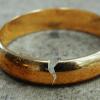Research
 Researchers at CU Boulder have completed an unprecedented “dissection” of twin galaxies in the final stages of merging.
Researchers at CU Boulder have completed an unprecedented “dissection” of twin galaxies in the final stages of merging.
 Gesel Mason's performance of “No Boundaries: Dancing the Visions of Contemporary Black Choreographers” at the Billie Holiday Theater made The New York Times' top 10 list.
Gesel Mason's performance of “No Boundaries: Dancing the Visions of Contemporary Black Choreographers” at the Billie Holiday Theater made The New York Times' top 10 list. Elspeth Dusinberre will deliver the 112th Distinguished Research Lecture at CU Boulder on Tuesday, May 1, at 4 p.m. in the UMC’s Glenn Miller Ballroom. Her talk is titled “Archaeology, Imperialism and What it Means to Be Human.”
Elspeth Dusinberre will deliver the 112th Distinguished Research Lecture at CU Boulder on Tuesday, May 1, at 4 p.m. in the UMC’s Glenn Miller Ballroom. Her talk is titled “Archaeology, Imperialism and What it Means to Be Human.”
 In the five decades since a landmark presidential commission on crime, cops and courts have begun taking domestic violence more seriously, but much work remains to be done, says Joanne Belknap, a University of Colorado Boulder professor of ethnic studies.
In the five decades since a landmark presidential commission on crime, cops and courts have begun taking domestic violence more seriously, but much work remains to be done, says Joanne Belknap, a University of Colorado Boulder professor of ethnic studies.
 Giving opioids to animals to quell pain after surgery prolongs pain for more than three weeks and primes specialized immune cells in the spinal cord to be more reactive to pain, according to a new study by CU Boulder.
Giving opioids to animals to quell pain after surgery prolongs pain for more than three weeks and primes specialized immune cells in the spinal cord to be more reactive to pain, according to a new study by CU Boulder.
 A cohesive conservation plan protecting the Vietnamese environment—and primates—is now signed legislation, in part due to efforts of a University of Colorado Boulder anthropologist.
A cohesive conservation plan protecting the Vietnamese environment—and primates—is now signed legislation, in part due to efforts of a University of Colorado Boulder anthropologist.
 Scholars and translators of Buddhist texts in the Tibetan language will meet at the University of Colorado Boulder next fall to discuss strategies to convey not only the literal meaning but also the literary flourishes of texts they translate into English.
Scholars and translators of Buddhist texts in the Tibetan language will meet at the University of Colorado Boulder next fall to discuss strategies to convey not only the literal meaning but also the literary flourishes of texts they translate into English. A team of wildfire practitioners and researchers—including some from the University of Colorado Boulder—is working across Colorado to better understand the human role in local wildfire mitigation.
A team of wildfire practitioners and researchers—including some from the University of Colorado Boulder—is working across Colorado to better understand the human role in local wildfire mitigation. Americans who admit to having extramarital sex most likely cheat with a close friend, according to research from CU Boulder’s Department of Psychology and Neuroscience.
Americans who admit to having extramarital sex most likely cheat with a close friend, according to research from CU Boulder’s Department of Psychology and Neuroscience.
 Scientists have long known that restricting calories can fend off physiological signs of aging, with studies in fruit flies, roundworms, rodents and even people showing that chronically slashing intake by about a third can reap myriad health benefits and, in some cases, extend lifespan.
Scientists have long known that restricting calories can fend off physiological signs of aging, with studies in fruit flies, roundworms, rodents and even people showing that chronically slashing intake by about a third can reap myriad health benefits and, in some cases, extend lifespan.

